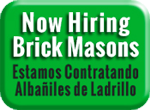Why You Should Have Your Chimney Relined
Chimneys tend to be one of the most overlooked aspects of home maintenance. There are a number of components inside a chimney system that can have issues, making it too important to be ignored. The liner of a chimney is a necessary for a safe and efficient fireplace. Fire safety experts stress that a fireplace or wood stove should not be used until a damaged chimney liner has been repaired or replaced. Below, learn more about why you should have your chimney relined.
 Damage Caused by a Chimney Fire
Damage Caused by a Chimney Fire
There are various misconceptions about chimney fires that homeowners need to know. For instance, many people mistakenly think a chimney fire is not a bad thing because it can burn off the creosote in the flue, saving money on chimney sweeping costs. This is a myth, however. The burning of creosote is indeed what keeps a chimney fire fueled, but the heat is so intense that the chimney liner is usually damaged. Home fires have occurred many times after a chimney fire because homeowners didn’t realize that the liner had been destroyed and combustible parts of the home were exposed to extreme heat.
Corrosion of the Liner
The functions of a chimney liner for a wood-burning fireplace or stove include the following:
- Protecting the home from exposure to dangerous temperatures and toxic fumes.
- Protecting the brick and mortar of a chimney structure from damage caused by heat and toxic combustion gases.
- Chimney liners help to ensure proper venting of toxic fumes created by fires.
If there is a small crack or any type of breach in a chimney liner, it is unable to perform these important functions. Liners deteriorate over time in the best conditions. If there is moisture in the flue, deterioration accelerates because the mix of water and the toxic, acidic materials in creosote wear away the liner material.
 Most chimneys are built with a clay tile liner because it’s the most economical material, though effective. When damage or decay occur, the home could catch fire because of combustible components of the home being exposed to high temperatures. In addition, toxic fumes could enter the living space of the home. Carbon monoxide is deadly, & it’s among the gases produced by wood fires.
Most chimneys are built with a clay tile liner because it’s the most economical material, though effective. When damage or decay occur, the home could catch fire because of combustible components of the home being exposed to high temperatures. In addition, toxic fumes could enter the living space of the home. Carbon monoxide is deadly, & it’s among the gases produced by wood fires.
Installing a New Heating Appliance
If you are having a new fireplace or wood stove installed in the existing fireplace, it is vital for the chimney flue to be within the size range recommended by the appliance’s manufacturer. If the flue is incorrectly sized for the appliance, the chimney won’t operate efficiently. This type of condition results in more creosote being deposited in the liner and excess production of carbon monoxide. With the appliance failing to properly exhaust combustion fumes, toxic gases are likely to enter the home.
Trust the Chimney Relining Experts
It’s important to hire professional chimney technicians for all aspects of chimney care, including chimney relining. All of the chimney sweeps at Chimney Saver Solutions are trained and certified. You can rely on the experts at Chimney Saver Solutions to provide thorough inspections and every type of chimney maintenance, chimney repair, chimney rebuilding, and chimney relining. Don’t make the mistake of assuming a chimney liner in good condition is an optional benefit, like landscape lining. Contact us today at 804-440-5000.






